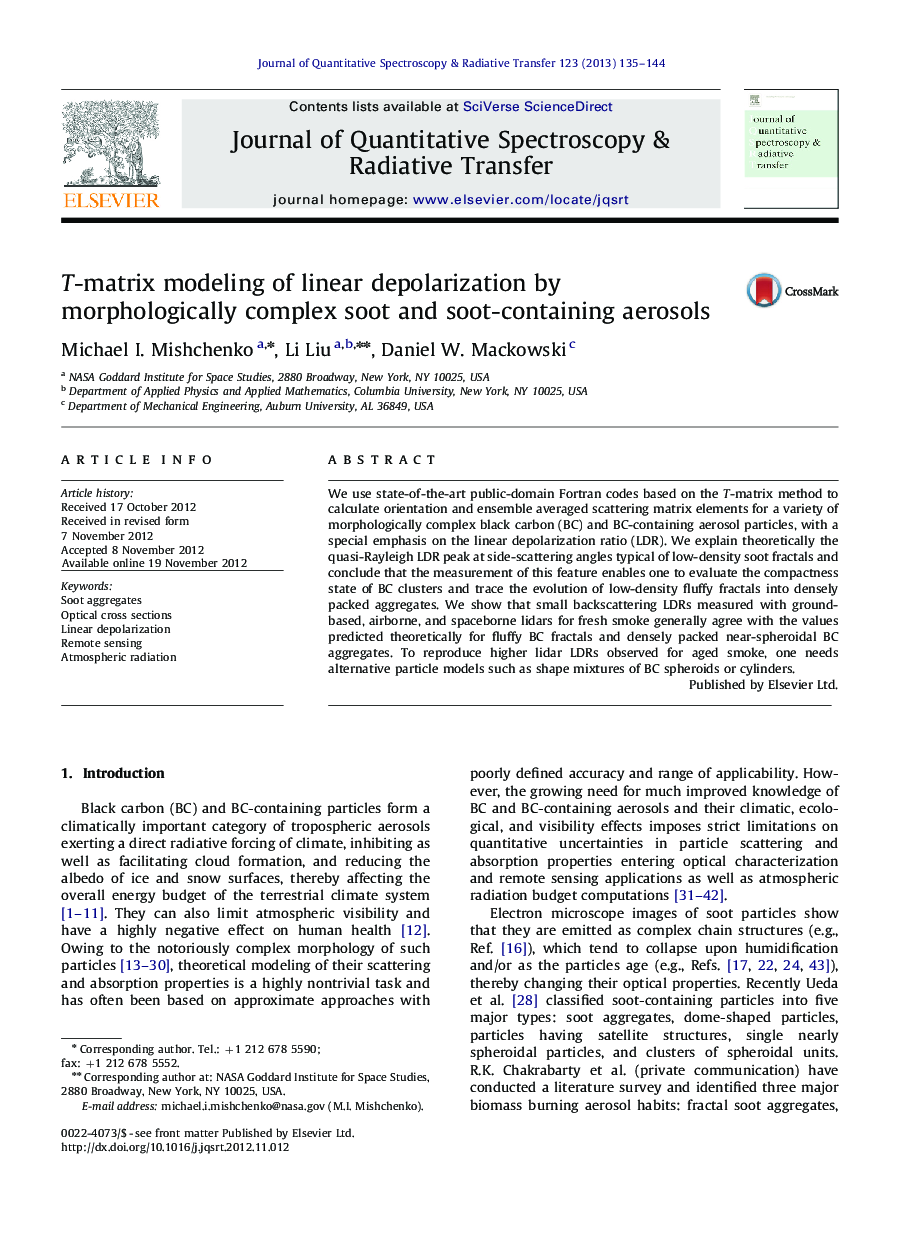| Article ID | Journal | Published Year | Pages | File Type |
|---|---|---|---|---|
| 5428832 | Journal of Quantitative Spectroscopy and Radiative Transfer | 2013 | 10 Pages |
We use state-of-the-art public-domain Fortran codes based on the T-matrix method to calculate orientation and ensemble averaged scattering matrix elements for a variety of morphologically complex black carbon (BC) and BC-containing aerosol particles, with a special emphasis on the linear depolarization ratio (LDR). We explain theoretically the quasi-Rayleigh LDR peak at side-scattering angles typical of low-density soot fractals and conclude that the measurement of this feature enables one to evaluate the compactness state of BC clusters and trace the evolution of low-density fluffy fractals into densely packed aggregates. We show that small backscattering LDRs measured with ground-based, airborne, and spaceborne lidars for fresh smoke generally agree with the values predicted theoretically for fluffy BC fractals and densely packed near-spheroidal BC aggregates. To reproduce higher lidar LDRs observed for aged smoke, one needs alternative particle models such as shape mixtures of BC spheroids or cylinders.
⺠New superposition T-matrix code is applied to soot aerosols. ⺠Quasi-Rayleigh side-scattering peak in linear depolarization (LD) is explained. ⺠LD measurements can be used for morphological characterization of soot aerosols.
